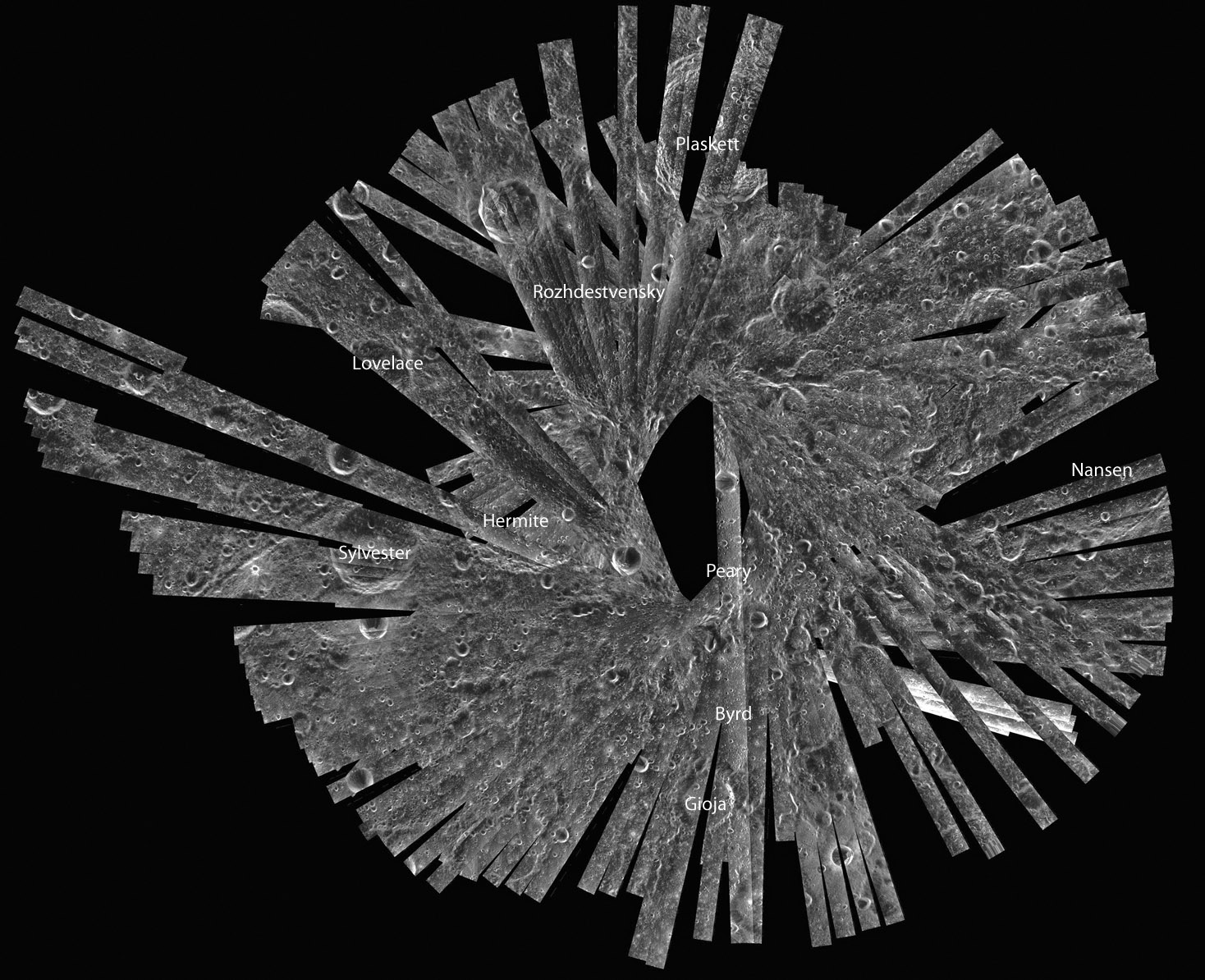Difference between revisions of "April 14, 2009"
| (7 intermediate revisions by the same user not shown) | |||
| Line 1: | Line 1: | ||
__NOTOC__ | __NOTOC__ | ||
=Beginning To See the Unseen= | =Beginning To See the Unseen= | ||
| − | + | <!-- Start of content --> | |
<!-- ws:start:WikiTextHeadingRule:2:<h1> --> | <!-- ws:start:WikiTextHeadingRule:2:<h1> --> | ||
<!-- ws:start:WikiTextLocalImageRule:8:<img src="/file/view/LPOD-Apr14-09.jpg/67637747/LPOD-Apr14-09.jpg" alt="" title="" /> -->[[File:LPOD-Apr14-09.jpg|LPOD-Apr14-09.jpg]]<!-- ws:end:WikiTextLocalImageRule:8 --><br /> | <!-- ws:start:WikiTextLocalImageRule:8:<img src="/file/view/LPOD-Apr14-09.jpg/67637747/LPOD-Apr14-09.jpg" alt="" title="" /> -->[[File:LPOD-Apr14-09.jpg|LPOD-Apr14-09.jpg]]<!-- ws:end:WikiTextLocalImageRule:8 --><br /> | ||
<em>image from [http://www.nasa.gov/mission_pages/Mini-RF/multimedia/1st_map_cycle_1.html NASA Mini-RF]</em><br /> | <em>image from [http://www.nasa.gov/mission_pages/Mini-RF/multimedia/1st_map_cycle_1.html NASA Mini-RF]</em><br /> | ||
<br /> | <br /> | ||
| − | Soon we will be able to see all the secret places on the Moon. NASA's Mini-SAR radar on the Indian orbiter Chandrayaan-1 is systematically imaging both poles, | + | Soon we will be able to see all the secret places on the Moon. NASA's Mini-SAR radar on the Indian orbiter Chandrayaan-1 is systematically imaging both poles, |
| − | peering into craters whose floors have been shrouded in shadows for a billion years or more. This early mosaic assembled from strips of data collected through | + | peering into craters whose floors have been shrouded in shadows for a billion years or more. This early mosaic assembled from strips of data collected through |
| − | March 2009 will ultimately be filled in and seamlessly mosaicked, shining lights (actually radio frequency energy) into all the Moon's dark polar holes. As well as | + | March 2009 will ultimately be filled in and seamlessly mosaicked, shining lights (actually radio frequency energy) into all the Moon's dark polar holes. As well as |
| − | illuminating the floors the bounced back radar beams can be processed to detect water ice if it occurs in the upper meters of the floors of the permanently | + | illuminating the floors the bounced back radar beams can be processed to detect water ice if it occurs in the upper meters of the floors of the permanently |
| − | shadowed craters, revealing if they will be oases in the hyper-desert of the Moon. The area shown is largely within the 80°N cap of the Moon; I have added names | + | shadowed craters, revealing if they will be oases in the hyper-desert of the Moon. The area shown is largely within the 80°N cap of the Moon; I have added names |
| − | for orientation. Because the Moon is imaged by detecting radar energy bounced off the surface, the Mini-RF team selected a high illumination angle to minimize | + | for orientation. Because the Moon is imaged by detecting radar energy bounced off the surface, the Mini-RF team selected a high illumination angle to minimize |
| − | shadowing, yielding a Full Moon appearance. | + | shadowing, yielding a Full Moon appearance. |
<br /> | <br /> | ||
<em>[mailto:tychocrater@yahoo.com Chuck Wood]</em><br /> | <em>[mailto:tychocrater@yahoo.com Chuck Wood]</em><br /> | ||
<br /> | <br /> | ||
<strong>Related Links</strong><br /> | <strong>Related Links</strong><br /> | ||
| − | Rükl plate [ | + | Rükl plate [https://the-moon.us/wiki/Rükl_4 4]<br /> |
PI Paul Spudis's progress [http://blogs.airspacemag.com/moon/2009/03/29/mini-sar-nears-completion-of-its-first-mapping-cycle/ report] of Mini-RF.<br /> | PI Paul Spudis's progress [http://blogs.airspacemag.com/moon/2009/03/29/mini-sar-nears-completion-of-its-first-mapping-cycle/ report] of Mini-RF.<br /> | ||
| − | A recent terrestrial [http://lpod. | + | A recent terrestrial [http://www2.lpod.org/wiki/March_11,_2009 view].<br /> |
<br /> | <br /> | ||
<hr /> | <hr /> | ||
| + | <p><b>Yesterday's LPOD:</b> [[April 13, 2009|Three Things To Notice]] </p> | ||
| + | <p><b>Tomorrow's LPOD:</b> [[April 15, 2009|A River Ran Through It]] </p> | ||
| + | <!-- End of content --> | ||
| + | {{wiki/ArticleFooter}} | ||
Latest revision as of 07:22, 28 October 2018
Beginning To See the Unseen

image from NASA Mini-RF
Soon we will be able to see all the secret places on the Moon. NASA's Mini-SAR radar on the Indian orbiter Chandrayaan-1 is systematically imaging both poles,
peering into craters whose floors have been shrouded in shadows for a billion years or more. This early mosaic assembled from strips of data collected through
March 2009 will ultimately be filled in and seamlessly mosaicked, shining lights (actually radio frequency energy) into all the Moon's dark polar holes. As well as
illuminating the floors the bounced back radar beams can be processed to detect water ice if it occurs in the upper meters of the floors of the permanently
shadowed craters, revealing if they will be oases in the hyper-desert of the Moon. The area shown is largely within the 80°N cap of the Moon; I have added names
for orientation. Because the Moon is imaged by detecting radar energy bounced off the surface, the Mini-RF team selected a high illumination angle to minimize
shadowing, yielding a Full Moon appearance.
Chuck Wood
Related Links
Rükl plate 4
PI Paul Spudis's progress report of Mini-RF.
A recent terrestrial view.
Yesterday's LPOD: Three Things To Notice
Tomorrow's LPOD: A River Ran Through It
COMMENTS?
Register, Log in, and join in the comments.



